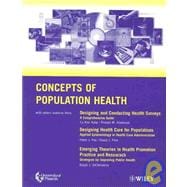|
3 | (34) | |||
|
4 | (1) | |||
|
4 | (1) | |||
|
5 | (1) | |||
|
6 | (1) | |||
|
7 | (1) | |||
|
8 | (1) | |||
|
9 | (3) | |||
|
12 | (1) | |||
|
13 | (24) | |||
|
14 | (1) | |||
|
14 | (1) | |||
|
15 | (16) | |||
|
31 | (1) | |||
|
31 | (1) | |||
|
32 | (5) | |||
|
37 | (40) | |||
|
38 | (1) | |||
|
38 | (1) | |||
|
39 | (2) | |||
|
41 | (1) | |||
|
41 | (9) | |||
|
50 | (2) | |||
|
52 | (1) | |||
|
53 | (24) | |||
|
53 | (1) | |||
|
54 | (3) | |||
|
57 | (2) | |||
|
59 | (3) | |||
|
62 | (5) | |||
|
67 | (2) | |||
|
69 | (2) | |||
|
71 | (3) | |||
|
74 | (3) | |||
|
77 | (82) | |||
|
78 | (1) | |||
|
79 | (2) | |||
|
81 | (11) | |||
|
92 | (2) | |||
|
94 | (1) | |||
|
94 | (4) | |||
|
98 | (1) | |||
|
99 | (1) | |||
|
100 | (3) | |||
|
103 | (20) | |||
|
104 | (1) | |||
|
104 | (6) | |||
|
110 | (2) | |||
|
112 | (3) | |||
|
115 | (1) | |||
|
116 | (2) | |||
|
118 | (3) | |||
|
121 | (2) | |||
|
123 | (36) | |||
|
123 | (3) | |||
|
126 | (3) | |||
|
129 | (3) | |||
|
132 | (6) | |||
|
138 | (8) | |||
|
146 | (6) | |||
|
152 | (3) | |||
|
155 | (4) | |||
|
159 | (28) | |||
|
160 | (1) | |||
|
160 | (5) | |||
|
165 | (4) | |||
|
169 | (9) | |||
|
178 | (1) | |||
|
179 | (2) | |||
|
181 | (1) | |||
|
182 | (5) | |||
|
187 | (92) | |||
|
188 | (1) | |||
|
189 | (1) | |||
|
190 | (1) | |||
|
191 | (3) | |||
|
194 | (1) | |||
|
195 | (2) | |||
|
197 | (1) | |||
|
198 | (2) | |||
|
200 | (1) | |||
|
201 | (18) | |||
|
202 | (1) | |||
|
202 | (1) | |||
|
203 | (3) | |||
|
206 | (8) | |||
|
214 | (3) | |||
|
217 | (2) | |||
|
219 | (16) | |||
|
220 | (1) | |||
|
221 | (1) | |||
|
221 | (3) | |||
|
224 | (6) | |||
|
230 | (2) | |||
|
232 | (1) | |||
|
232 | (1) | |||
|
233 | (2) | |||
|
235 | (16) | |||
|
236 | (1) | |||
|
236 | (7) | |||
|
243 | (2) | |||
|
245 | (2) | |||
|
247 | (1) | |||
|
248 | (1) | |||
|
248 | (3) | |||
|
251 | (14) | |||
|
252 | (1) | |||
|
252 | (4) | |||
|
256 | (3) | |||
|
259 | (6) | |||
|
265 | (14) | |||
|
266 | (1) | |||
|
266 | (3) | |||
|
269 | (5) | |||
|
274 | (1) | |||
|
275 | (4) | |||
|
279 | (26) | |||
|
280 | (5) | |||
|
285 | (3) | |||
|
288 | (9) | |||
|
297 | (4) | |||
|
301 | (4) | |||
| References | 305 |








